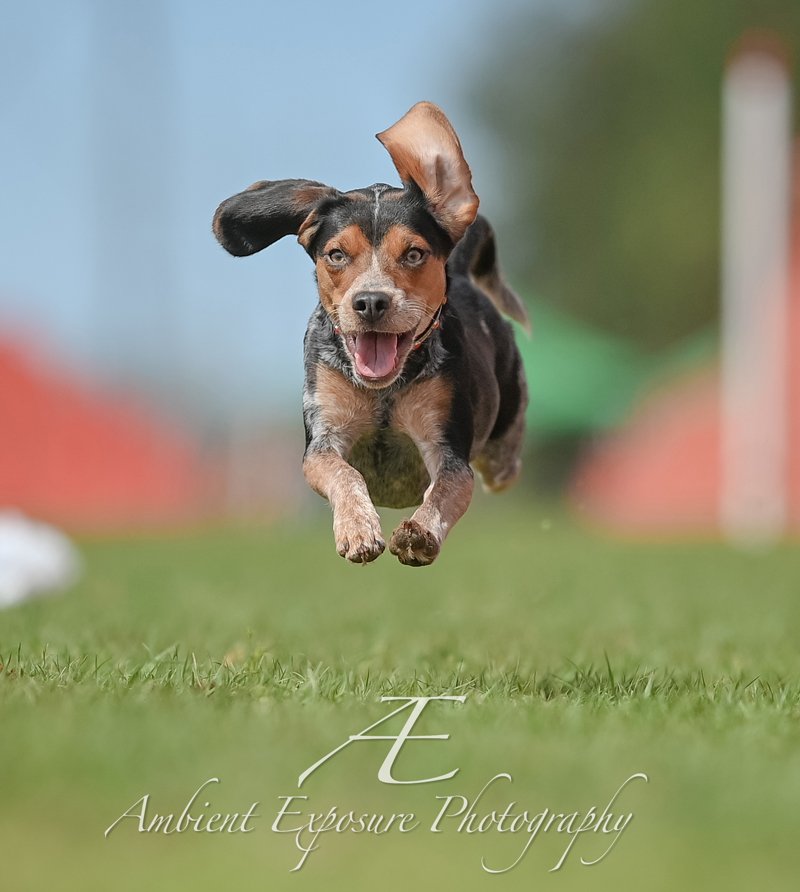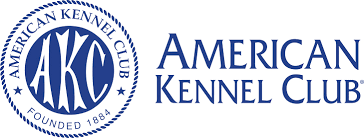THE PROCESS
About CATs
Coursing Ability Tests (CATS)
The purpose of the AKC Coursing Ability Test is to provide all dogs and their owners an enjoyable, healthy activity in which they can participate. Based on the sport of lure coursing, Coursing Ability Tests will serve as an introduction to the sport for all eligible dog owners. Dogs run singularly and are required to complete their course with enthusiasm and without interruption within a maximum amount of time. The Coursing Ability Test is a pass–fail event.
The CAT test is a 300, 400 or 600 yard course set up to test the ability of the all breed dog to “course”. The 300 yard is set for those dogs listed as brachycephalic or 12 inches at the withers. The 400 yard course is for the Veteran runners that are over 12 inches and those under 12 can run 200 yards. The 600 yard course is for the taller dogs.
Three titles will be awarded for dogs that pass the Coursing Ability Test the required number of times. These are suffix titles that will appear on a dog’s pedigree with a higher level title superseding a lower level title. Coursing Ability (CA) – Awarded to a dog that passes the Coursing Ability Test three times under at least two different judges. Coursing Ability Advanced (CAA) – Dog passes the Coursing Ability Test a total of ten times. (CA+7 additional passes) Coursing Ability Excellent (CAX) – Dog passes the Coursing Ability Test a total of 25 times. Coursing Ability Excellent 2 (CAX2) – Dog passes the Coursing Ability Test a total of 50 times. A higher numbered title will be awarded for every additional twenty five passes.
CATS COURSE DESIGN
The course shall be designed with safety for non-sighthound breeds as a primary consideration. There shall be no turns more acute than 90 degrees. The total length of the course shall be no less than 600 yards and should be as close to 600 yards as possible. The lure will consist of plastic strips. Depending on the size and type of dog, the dog will run either the full course or a 300 yard course. The 300 yard distance shall be clearly marked. Safety is of utmost importance. Many of the dogs running the Coursing Ability Test will not possess the agility of a sight hound and this must be a consideration in the design of the course.
The event committee is responsible for the safety of the course by ensuring they have individuals with sufficient experience and knowledge in course design at the event. This experience can be gained by serving as a lure operator, lure coursing trial chair or huntmaster, having run a dog to its lure coursing championship, or being an AKC lure coursing judge. The judge is responsible for walking the course prior to the start of the event in order to look for hazards.
If there is a question whether a dog should run the 300 or 600 yard course, the judge will decide. The premium shall state the distance for each course and the eligibility of dogs for each course, including veteran dogs that may run two-thirds of the normal course distance at the owner’s discretion.
DISTANCE & MAXIMUM TIME
Dogs run singularly in Coursing Ability Test events. Veteran dogs may run two-thirds of the normal distance at the owner’s discretion. Veteran dogs are defined for this test as dogs older than 7 years of age. A veteran dog’s owner must declare prior to the start which distance the dog will run.
300 Yard Course
This distance is for dogs shorter than 12 inches at the withers and/or brachycephalic (“flat-faced”) dogs. A veteran dog may run 200 yards at the owner’s discretion. A dog must complete this course in less than 1 1/2 minutes.
600 Yard Course
This distance is used for all dogs that do not run the 300 yard course. A veteran dog may run 400 yards at the owner’s discretion. A dog must complete this course in less than 2 minutes.
STEP ONE
Canine Partner Registration
ALL Breeds must be individually registered with the AKC
This includes all AKC registered purebreds, Foundation Stock Service (FSS), Purebred Alternative Listing (PAL) and AKC Canine Partners Spayed or Neutered Dogs, or dogs with breed disqualifications may be entered.
Not AKC registered? No problem!
If your Canine Partner is not yet registered with AKC, simply fill out the AKC Canine Enrollment Application online today. Once you are issued a number, you will be able to register early for a test through our website.

Permission has been granted by the American Kennel Club for the holding of events under American Kennel Club Rules and Regulations

STEP TWO
AKC Entry Forms
You will need to complete an official AKC entry form for each dog, one entry per event number. A dog may only enter once per event, there is a separate fee for each dog and each test.
Early test entries thru our website are $21 per dog per test. Check out our Premium Lists for an upcoming test near you.
Day of test entries are $30 per dog per test, cash or checks only – make checks payable to RDC. Please print and fill out your Official AKC Entry Form, you must turn in your entry forms and fees to the Field Secretary before 2pm on the day of the test.
DAY OF TEST
What’s Next?
01.
Inspection
Immediately following the close of entries, each dog will be inspected by the inspection committee for lameness, fitness to compete, and females in season. All dogs to be inspected must be presented without tape, bandages or wrapping/coverings of any kind (coats, blankets, etc). If, in the opinion of the inspection committee, any entry is found to be lame, unfit to compete or in season, they shall no be allowed to test, and the applicable entry fees shall be refunded.
02.
Roll Call & PRe-Test Briefing
All entrants will assemble in a designated location in order for the Filed Committee to confirm those entered in the test area are present. Entrants should respond with “Here” when they hear their dogs’ names called. At this time, test procedures will be explained and any questions answered.
03.
Running Your Dog
It is recommended that dogs be handled with a “slip-lead” that gives instantaneous freedom to the dog when the “Tallyho” (release) signal is called by the Huntsmaster. The Host Club will have slip leads for you to borrow, please ask.
Dogs may wear any collar except a choker collar, a collar with prongs or an electronic training collar. The collar must be snug to minimize the chances of getting hung up on something during the run. Owners should be aware that tags hanging from the collar could be required to be removed to help prevent them from being entangled on something during the run. Owners may use clips or rubber bands to hold their dog’s hair. The owner assumes responsibility for the safety of their dog regarding the dog’s collar and paraphernalia on the dog.
Head halters, such as the Gentle Leader or Halti, may be used on the grounds but must not be wornwhile running the course.
Roll Call - 8:30am
Morning Entries Close - 11:30am
Afternoon Runs - 1:00pm-3:00pm
Sunday - Check Premium for Times
If entries are not at FTS on or before closing time, they will not be accepted.
Check individual events for unusual times.


Premium Lists
F.A.Q.
Here are some frequently asked questions about CATS and Fast CATS. If you have a question and do not see it listed here, please contact us today.
How is the Course Designed?
The event committee is responsible for the safety of the course by ensuring they have individuals with sufficient experience and knowledge in course design at the event. This experience can be gained by serving as a lure operator, lure coursing trial chair or huntmaster, having run a dog to its lure course championship or being an AKC lure coursing judge. The judge is responsible for walking the course prior to the start of the event in order to look for hazards.
How are points calculated?
AKC CONVERSION FORMULA:
204.545 ÷ Time = MPH
TO CALCULATE POINTS:
Multiply MPH by handicap:
< 12" height = handicap of 2
12" - 18" height = handicap of 1.5
18" height = handicap of 1
Should my dog run the 300 or 600 yard course?
300 Yard Course
This distance is for dogs shorter than 12 inches at the withers and/or brachycephalic "flat faced" dogs. A veteran dog may run 200 yards at the owner's discretion. A dog must complete this course in less than 1 1/2 minutes.
600 Yard Course
This distance is used for all dogs that do not run the 300 yard course. A veteran dog may run 400 yards at the owner's descretion. A dog must complete this course in less than two minutes.
If there is a question whether a dog should run the 300 or 600 yard course, the judge will decide. The premium shall state the distance for each course and the eligibility of dogs for each course, including veteran dogs may run 2/3 of the normal course distance.
Dogs run singularly in all Coursing Ability Events.
Can my dog wear a collar/paraphernalia?
Dogs may wear any collar except a choker collar, a collar with prongs or an electronic training collar. The collar must be snug to minimize the chances of getting hung up on something during the run. Owners should be aware that tags hanging from the collar could be required to be removed to help prevent them from being entangled on something during the run. Owners may use clips or rubber bands to hold their dog's hair. The owner assumes responsibility for the safety of their dog regarding the dog's collar and paraphernalia on the dog.
Head halters, such as the Gentle Leader or Halti, may be used on the grounds but must not be wornwhile running the course.
How long does my dog have to wait between runs?
All dogs must wait a minimum of 45 minutes between runs, no back to back runs allowed.
Can my veteran dog run at a shorter distance?
Veteran dogs may run two thirds of the normal distance at the judge's discretion. Veteran dogs are defined for this test as a dog older than 7 years of age. A veteran dog's owner must declare prior to start which distance the dog will run.

